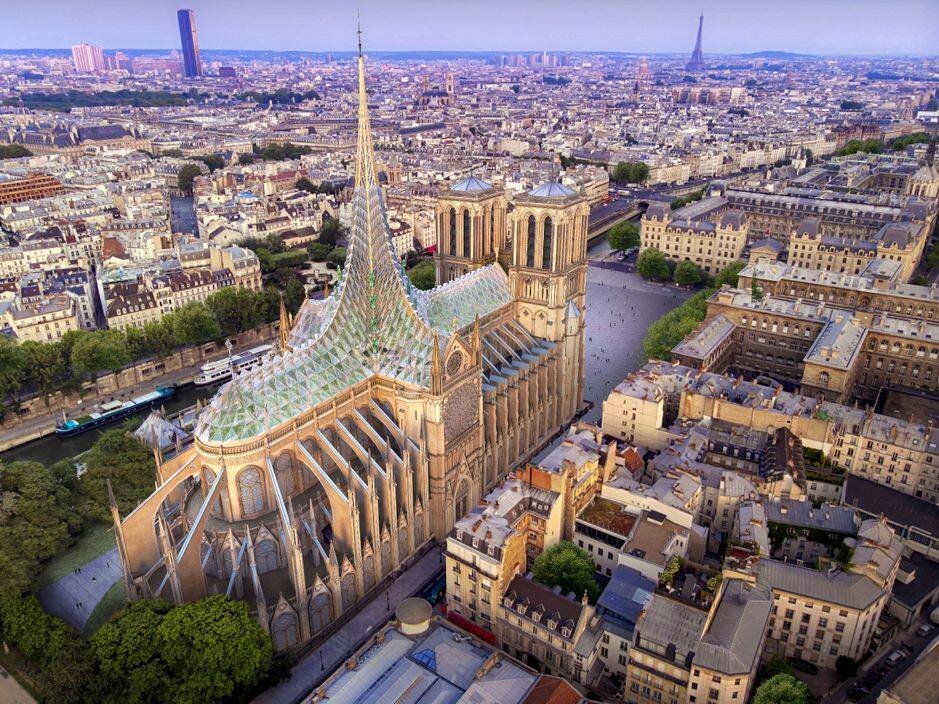-
Posts
526 -
Joined
-
Last visited
Content Type
Profiles
Forums
Gallery
Events
Everything posted by Ekis
-

Building a Medieval fortress - by Waitoa - Del Prado 1/87
Ekis replied to Waitoa's topic in Non-ship/categorised builds
Oh, it's very nice to see a finished realization of the original Del Prado kit with its decoration elements and the diorama! In addition to having had the courage to finish it completely, I think your grandfather did an excellent job: bravo! Thank you for sharing it with us, Laura! 😉 -
Thank you all for your answers and comments! 🤪 @Kevin I use all kinds of products such as diluted India Ink, diluted wood stain, but also products from AK interactive for wood aging (wash for wood), or different colors for mold or moss (Slimy Grime Light and dark) or rust. In general, this is enough for weathering. But it still lacks the vegetation (grasses, mosses, soil, etc...) that will come afterwards on the whole.
-
This Euro is THE resource! An almost religious relic ! 😂 Seriously, one can imagine that the harvests are excellent (as shown in the seed granary), or that some famous stonecutters live here, or that the clay quarries are abundant and sold at a good price... Or the nearby forests offer wood in abundance. Or simply, the bishopric of the region considers this cloister to be religiously important because it has sheltered any Saint and makes it a place of pilgrimage! In short, full of possibilities! 😁
-
No, in such a small village, at night, there was nothing at all... Except perhaps in those dangerous times when a handful of men could stand guard over the fortifications, or an inhabitant moving from one house to another with a torch or lantern. But otherwise, no rather rare and expensive energy was spent to light a deserted village all night long! 😊
-
Some pictures of the construction site with the (very small) assembly of the windows and bow-windows of the houses in the center. And an upgrade of the cloister with the improved well, but also the pediments enriched with a frieze of stones and tiles. The well of the village has also finally received the right rope and crank...
-
For your arches, you may want to make a row of stones that follows the curvature, like the big bridge in the kit. Otherwise, in reality, your stones cannot hold in suspension. I think the aesthetics of your city entrance arches would benefit a lot. Don't you think so? 😀 If I were in your place, along the wall on the left, I would make wooden warehouses and a repair shipyard for example...
-
@mtaylor In fact, there's something written on the door of the basic cardboard, but when I put the real door in place, there will be nothing... People in the 14th didn't know how to read very often! 😉 @Kurt Johnson If I was responsible for the reconstruction of the roof of Notre Dame in Paris, I would certainly have asked for a sign of its evolution over time. All cathedrals have been able to evolve as they have been built over the course of several centuries... I love historic monuments and restoration as they were in their time, remaining faithful to the methods and materials of their time. But in the case of Notre Dame, the roof only dates from the 19th century, the spire was ornamental and very recent (only 1860). It did not date from the initial construction of the Middle Ages. We could have taken advantage of the fire to do something that shows a Notre Dame built between the 12th and 15th, and continue by showing the 21st ... But the choice is to rebuild as it was restored in the 19th, I think it's a pity. I would have preferred something like that with a glass roof that highlights the fabulous medieval architecture.
-
Well precisely, about the half-timbering, here is the current state of the last houses of the village... 😉 The half-timberings are made, being dyed, the walls are also finished, either in cob, bricks or stones. As this block of house really comes in the center of the village, I tried to make a logical link with all other constructions around, while remaining consistent in time and logic. The next step: windows, doors, chimneys.
-
There are many different styles of half-timbering in Europe. And there are some in all European countries, including Great Britain, of course. This style for you Anglo-Saxons, is necessarily named with the English terms: it seems normal. Even in France alone, there are big differences in half-timbering depending on the region. But all of these styles respond to construction methods originating from the Romans, then from the Middle Ages.
-
@popeye the sailor Thanx ! 😁 As I chose to make a village in the 14th in the south of France, I couldn't do everything in stone as the kit planned. Basically, the partnership between the publisher DelPrado (closed company for years) and the manufacturer of the kit Aedes Ars are Spanish. Spain has relatively few forests, and most medieval buildings are made of dry stone with little wood. This is not at all the case in France. So as I do on each project, I adapt according to my own choices for more realism, and especially less simplifications...
-
Thanks Kurt! 😉 I think that after this village is totally finished, I will come back to the boats... Some have been waiting for me for a long time! To answer you about the construction of this village, what I like the most, apart from the vision of the whole, is to take each element, each building, as a whole project and to carry it through to the end having implemented all the ideas! For each construction, I think about how to build it, the reason of this building in the village, the construction at the time... As individual models, and no matter the materials: only the result counts!
-
Water mills were often single buildings outside the walls of a bastide or fortified town. The reason is simple: more often a fortification was built high up on a hill to protect itself and to see the aggressors from further away... So not very close to the banks of a river. But you're partly right about some cities that evolved from Roman times to the Middle Ages. The Romans mastered water mills perfectly, of course.
-
@Canute @Waitoa In fact, the construction of mills has changed little over the centuries. In the 14th century, Europeans brought the idea of windmills back from the Middle East after the first crusades. They built them on the citadels of Syria and elsewhere, and then, once back home, all over the countryside and on the walls of large cities (Carcassonne for example). The only thing that evolved were the stone bases to make them less fragile, and the canvases on the wings when fabric became more common for everything. Then the Europeans (and therefore carpenters) migrated to America and reproduced the same constructions with the material (wood) they found in abundance . It is not surprising that the mills are the same! 😀
-
I'm building the last block of houses for the center of the village. A long time of carpentry! But before going any further, I had had an idea for a long time. We had to look a little more precisely at what it looked like in the 14th. A windmill to create from scratch. The reason why we hardly have them anymore in France is that they were totally made of wood. There are only a few re-creations left and the stone bases most of the time. I went to search some archives on the net and here is the result :
-
It's not the most spectacular boat, but precisely your model, its construction, the impressive number of details, the quality of the finish, and finally the support... make this boat one of the most beautiful models I've seen in recent years! Bravo ! 🤪👋
-

Building a Medieval fortress - by Waitoa - Del Prado 1/87
Ekis replied to Waitoa's topic in Non-ship/categorised builds
Well, I build like you, by shifting the stones one on top of the other. One that a line of stones is in place, one file stroke to find horizontality and attack the next row. For the corners of thick walls, the corners of towers, I do differently by making the edges first with larger stones to respect the period constructions (see attached photo). The stones in the kits are the same indeed, which is a pity for the realism of these constructions and their different scale. I imagine that it is necessary for the manufacturer to make kits that seem simpler to assemble, and easier to manage at the factory... But not for this village, Waitoa. You have big stones (15x7x5) and the "normal" 10x5x5. At Aedes Ars, there are others, flatter (10x3x5) or smaller (8x4x4) or 6x3x3 that I used for the last house in front and the normal stones for the side walls. For my part, I try to vary the sizes of the stones according to their use in the village. I do the same thing with the different tiles, rectangular, large or small, or square. -

Building a Medieval fortress - by Waitoa - Del Prado 1/87
Ekis replied to Waitoa's topic in Non-ship/categorised builds
I'm just in the process of doing some touch-ups on the cloister as well to enrich the design a bit. Can't wait for the next one, Waitoa ! 😉
About us
Modelshipworld - Advancing Ship Modeling through Research
SSL Secured
Your security is important for us so this Website is SSL-Secured
NRG Mailing Address
Nautical Research Guild
237 South Lincoln Street
Westmont IL, 60559-1917
Model Ship World ® and the MSW logo are Registered Trademarks, and belong to the Nautical Research Guild (United States Patent and Trademark Office: No. 6,929,264 & No. 6,929,274, registered Dec. 20, 2022)
Helpful Links
About the NRG
If you enjoy building ship models that are historically accurate as well as beautiful, then The Nautical Research Guild (NRG) is just right for you.
The Guild is a non-profit educational organization whose mission is to “Advance Ship Modeling Through Research”. We provide support to our members in their efforts to raise the quality of their model ships.
The Nautical Research Guild has published our world-renowned quarterly magazine, The Nautical Research Journal, since 1955. The pages of the Journal are full of articles by accomplished ship modelers who show you how they create those exquisite details on their models, and by maritime historians who show you the correct details to build. The Journal is available in both print and digital editions. Go to the NRG web site (www.thenrg.org) to download a complimentary digital copy of the Journal. The NRG also publishes plan sets, books and compilations of back issues of the Journal and the former Ships in Scale and Model Ship Builder magazines.



